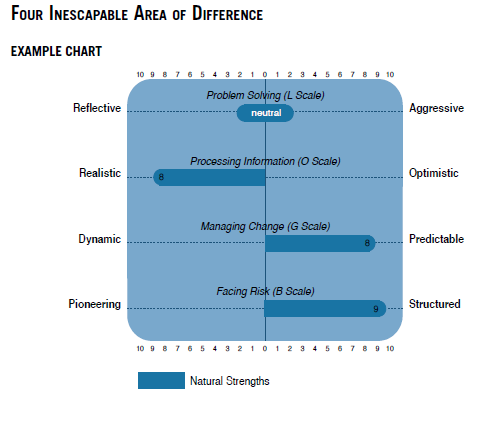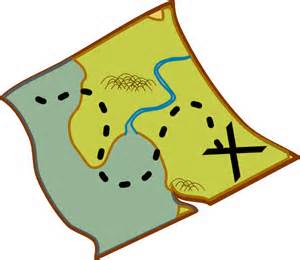First in a series that explains the six areas of the Leading From Your Strengths profile report
Leading From Your Strengths (LFYS) Profiles are personalized, detailed 20-page reports which accurately describe your individual habitual patterns of behavior, thought, emotion, and communication. They provide you with sophisticated, objective insights and action steps about your unique strengths – data you can use immediately and long-term. Teams, couples, families, and employers use the profiles in order to work together more effectively. Although the profile questionnaire is quick and simple to complete, it provides sophisticated data in a 20-page report in six sections:
- Your Natural Strengths
- Checklist for Communicating
- Your Ideal Environment
- How Others Can Best Lead and Motivate You
- Your Perceptions
- Your Adapted Strengths
This series visits each of those sections to explain its information – and how you can use it.
About the Natural Strengths Section
Your natural strengths are qualities with which you are born. They can be attributed to the innate genetic material that exists within you and was passed down to you from preceding generations. Natural strengths are your unique way or manner of going about the tasks of daily life. Some may even refer to your strengths as “personality.” Your profile report uses four components to unpack your natural strengths. This first section of your profile report provides the basis for the remaining elements.
1. Natural Strengths Scales. Four scales are used to measure your natural strengths: problem solving, processing information, managing change, and facing risk. The first part of your report explains these four scales.
2. The Natural Strengths Chart. This visual picture in graph form represents your natural strengths in the four predictable areas: problem solving, processing information, managing change, facing risk.
information, managing change, facing risk.
Your Strengths Chart is generated from your responses to “Least” questions on the questionnaire, based on research indicating that people are most truthful when asked what they like least. Reading the chart should confirm qualities in your character of which you’re already aware. They indicate behaviors you will likely exhibit naturally, in everyday life, and particularly when you are placed under extreme stress or pressure. The descriptors indicated on your strengths chart seldom change over time, with the exception being a significant life-changing event.
Note that the Strengths Chart does not measure cognitive reasoning, aptitudes, motivation, or detrimental behaviors. This is deliberate. Your strengths, no matter where they lay on the scale, are positive qualities.
The Energy Line in the center of the chart indicates the baseline from which intensity levels are measured in the four areas on a scale of one to ten. Of the four, each has two dominant strengths, totaling eight strengths. The higher the number in one area, the more intense your strength. Yet one strength is not more valuable than another – whether on one of the four scales or on one side of the Energy Line. You are a combination of your strengths and their intensity. While each scale is important individually, they are not independent.
3. General Characteristics. This section of your profile expands upon the basic information provided in the strength chart. It is a narrative summary which outlines specific understandings of your strengths, based on your responses in the questionnaire.
4. Value to the Team. This list, derived from your strengths and their intensity, provides an inventory of 8 – 12 specific talents and strengths that you bring to a team, marriage, or family. By looking at these statements, you can better identify your role in the group. As you grow to better understand your strengths, you can capitalize on these value statements and put them into practice, making you an even more valuable member of the team.
Ways to Use the Natural Strengths Section
“Yes, that is so true!” That is a common reaction people have upon reading their profile report, especially this first section outlining their natural strengths. No matter if you are well aware of your strengths or previously unsure about them, reading about them brings confirmation, validation, insight, and even excitement. Your strengths affirm who God created you to be. The data opens up personal areas you can explore to develop healthier purpose and healthier relationships.
At the same time, others in your family or on your team benefit tremendously by reading this section of your report. They can offer feedback to confirm your natural strengths. The data can give them insights about you they had previously missed. Your information equips them to interact with you more productively and effectively.
You and others in your life can use this foundational section of the report as a platform to build stronger ties. God’s Word rings true in the reading: “I praise you because I am fearfully and wonderfully made; your works are wonderful, I know that full well” (Psalm 139:14, NIV).
More about Your Profile Report
A Map of Your Profile Report, Part 2: Checklist for Communicating
A Map of Your Profile Report, Part 3: Your Ideal Environment
A Map of Your Profile Report, Part 4: How Others Can Best Lead and Motivate You
A Map of Your Profile Report, Part 5: Your Perceptions
A Map of Your Profile Report, Part 6: Your Adaptive Strengths

